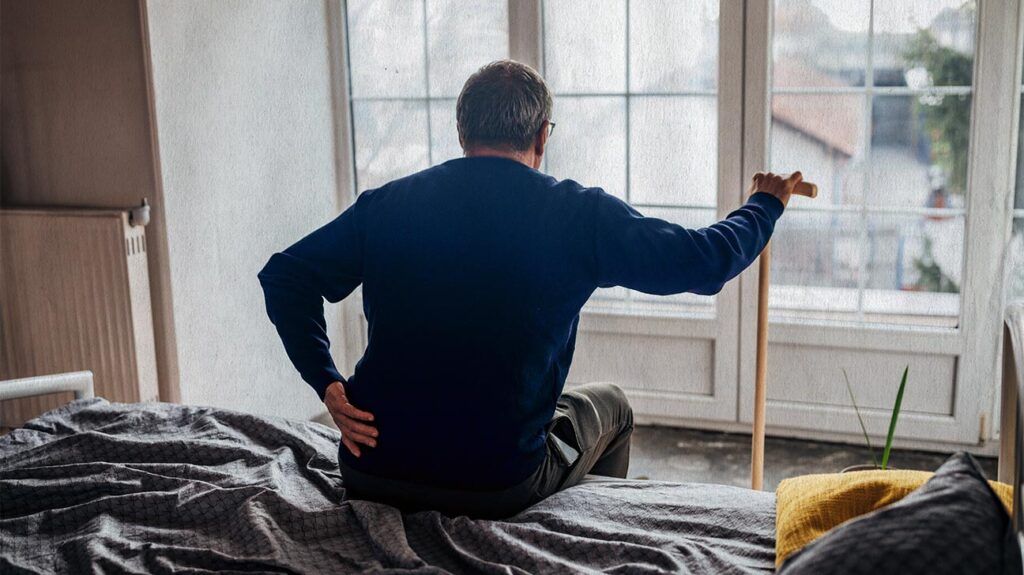People can make lifestyle modifications to help prevent spinal stenosis. These may include maintaining a moderate weight, quitting smoking, and practicing appropriate posture.
Spinal stenosis typically occurs due to aging and general wear and tear on the spine. In spinal stenosis, the spaces in a person’s spine narrow. This places pressure on the spinal cord and nerve roots, causing a range of symptoms, including lower back pain and weakness in the legs and feet.
Some people may be more likely to develop spinal stenosis than others. However, they can take steps to help prevent the condition.
This article explores who may be at risk of developing spinal stenosis, tips to help prevent it, and how doctors treat it. It also discusses when someone should speak with a healthcare professional.

Spinal stenosis is
Sometimes, people have issues with their spine from birth, which
Common risk factors for spinal stenosis relating to aging include:
- A bulging disk: A herniated disk, which refers to a bulging disk, places pressure on a person’s spinal cord. Typical disks act like cushions to absorb any shock that could affect the spine.
- Thickening of the facet ligaments: These ligaments sit in between the bones of the spine, or vertebrae. When the spine is too mobile, these ligaments thicken to keep the spine steady.
- Spondylolisthesis: When spondylolisthesis occurs, one or a few vertebrae slip in front of one another, so that the spinal column is no longer in alignment. This places pressure on the spinal cord and nerves.
Other risk factors include:
Spinal stenosis is part of the natural aging process. Research indicates that
The rate at which the spine narrows largely relies on lifestyle factors, including those below.
Exercise
Keeping core muscles strong can help prevent and treat spinal stenosis.
A
Because the sample size of this study only included 62 people, further research with more participants is necessary.
Diet
Eating a balanced diet rich in nutritious foods can benefit spine health. According to a 2021 study, routinely eating cereals, fruits, and fish may reduce the risk of lumbar spinal stenosis.
However, the researchers also noted that the opposite was true when people ate ultra-processed foods, as their risk of lumbar spinal stenosis increased. However, this was a small study, so more research is necessary.
Quitting smoking
Researchers have long associated smoking with an extensive range of health conditions, including degenerative spine disease.
A
Therefore, people should consider quitting smoking, if applicable, to help prevent their risk of spinal stenosis.
Practicing appropriate posture
Research suggests that sitting in an awkward or slumped posture for long periods
However, sitting straighter reduces the force or load on the cervicothoracic joint, which is the joint that connects the skull to the spine. The researchers also observed this effect in the lumbar area of the spine.
Read about some exercises and tips for better posture.
Maintaining a moderate weight
Obesity can have several detrimental effects on the body, including increasing the risk of lower back pain.
A
The treatment a person receives for spinal stenosis
Nonsurgical treatments may include:
Medications may include:
- anti-inflammatories
- prescription pain relievers
- over-the-counter pain relievers
- numbing injections
Surgical treatments may include laminectomy and spinal fusion, which is when a surgeon joins two or more vertebrae that have slipped from their usual position.
A person needs to consult a doctor if they experience
- persistent lower back pain or neck pain
- tingling, numbness, or cramping in the feet and legs
- burning pain that radiates down the glutes
- weakness in the legs, feet, arms, hands, or fingers
Additionally, a person with spinal stenosis should speak with a healthcare professional if their symptoms worsen or do not improve with treatment.
Spinal stenosis occurs when the spaces in the spine narrow, which places pressure on the nerves. When this happens, a person may develop symptoms such as lower back and neck pain. The main causes of spinal stenosis are due to wear and tear of the spine as a person ages.
To help prevent the onset of spinal stenosis, individuals can make lifestyle changes, including maintaining a moderate weight, practicing appropriate posture, and eating a balanced diet.
A doctor may recommend surgery, medications, or other nonsurgical treatments, such as physical therapy, for people with spinal stenosis. A person should speak with a healthcare professional if their symptoms worsen or do not improve with treatment.
